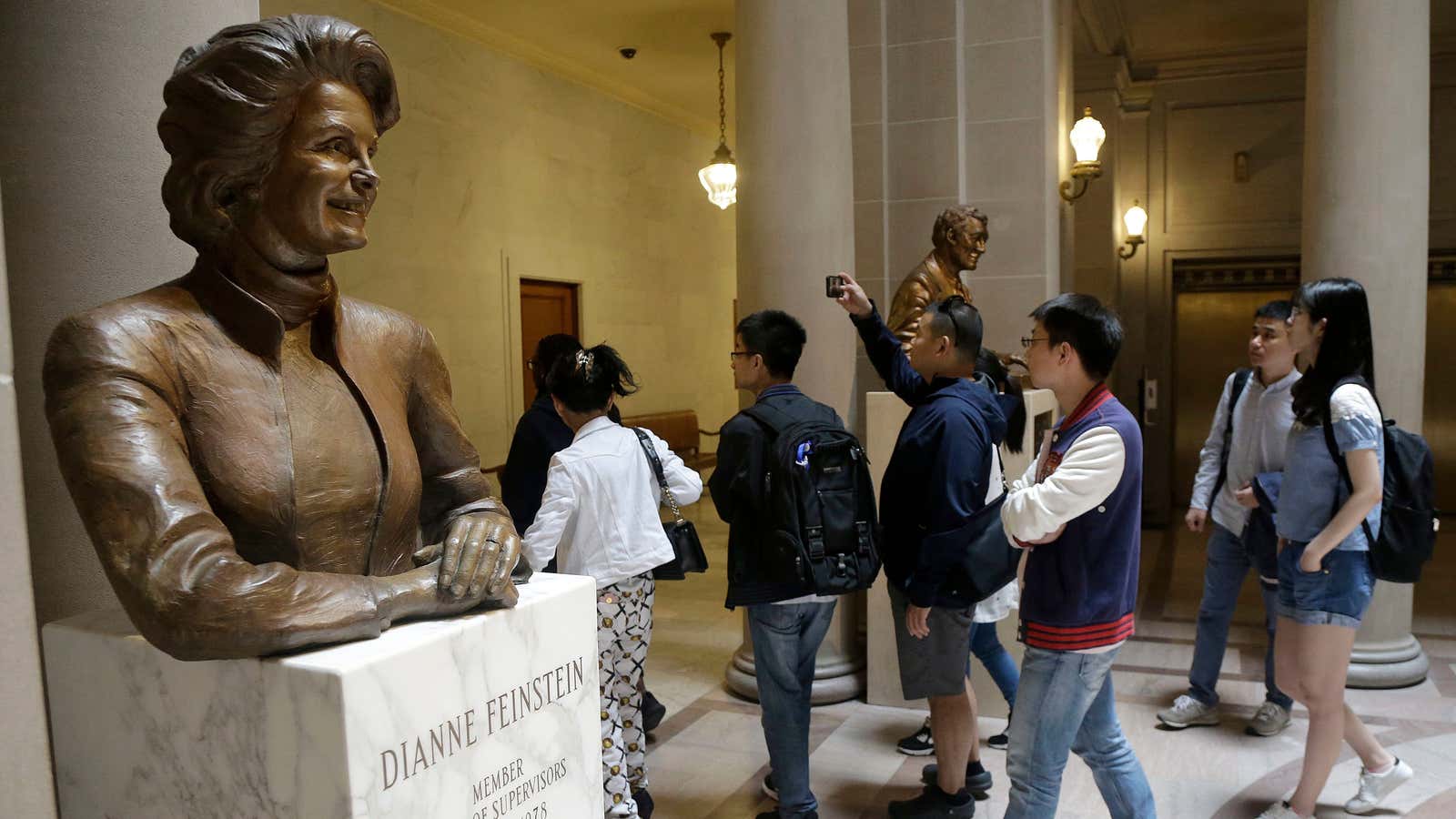Like most other spheres of public life, art has a representation problem. For instance, there are dozens of sculptures in Washington. DC. As of 2016, only 12 are of women, and only five are actual historical figures. (The others tend to be things like female representations of “memory” or mythological creatures like sea nymphs.) New York City’s Central Park has over 20 statues celebrating men and their achievements. There are none representing a non-fictional woman from real-life history.
This is a disparity that affects most (if not all) other cities. In San Francisco, of 87 public statues depicting non-fictional figures, only three are of women: Nurse Florence Nightingale, and former city mayor (and current US senator) Dianne Feinstein. So, the city has decided to tackle inequality by policy, through an innovative measure: Public art quotas. It’s sort of like affirmative action, but for art.
On Sept. 26, the city’s board of supervisors unanimously passed an ordinance requiring at least 30% of public art to depict non-fictional women. Stefani, who sponsored the ordinance after it was introduced by then-supervisor Mark Farrell in June 2017, presented at a city government meeting saying that (video) “the accomplishments of great women deserve to be recognized alongside the accomplishments of great men.”
The ordinance also created a Women’s Recognition Public Art Fund “to accept gifts to pay for the design, construction, repair, maintenance, and improvement of public art depicting historically significant women.”
The project will begin with a monument to poet Maya Angelou a long-time San Francisco resident who, at age 16, the city’s first female, black streetcar conductor. A bust of the poet, with an estimated cost of $400,000 (plus $100,000 set aside for ongoing maintenance) will be placed outside the city’s Main Library by 2020.
The legislation doesn’t just apply to statues. “Other works of art on city-owned property, public building names, and street names” will also have to abide by the 30% rule, says the ordinance. By October 2019, the city will have to list all streets, buildings and building rooms, parks, plaques, and public art named after or depicting historical figures, to help track the gender ratio as it changes thanks to the new art representing women. Stefani says her ultimate goal is to get the share of San Francisco’s public art representing women to 50%.
Correction: A previous version of this story stated there are two statues depicting non-fictional women in San Francisco. There actually are three.
